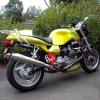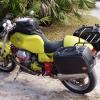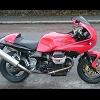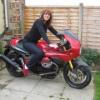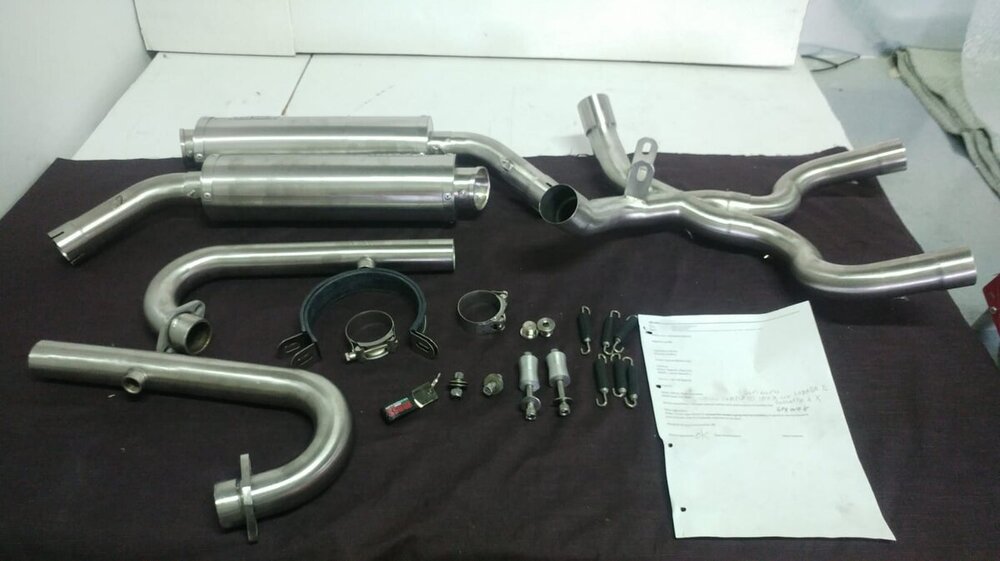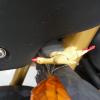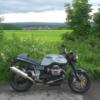Leaderboard
Popular Content
Showing content with the highest reputation on 06/21/2020 in all areas
-
70 mph on Brit roads 80 years ago on a Brough should equate to 120 on a V11 today.3 points
-
Oh yes,I can promise there will be pictures and dynocharts or butt dyno comments.2 points
-
My Dad lived on a farm in Dorset as a lad, he often spoke of seeing and hearing Lawence and his Brough riding along the main road near Blandford army camp. It was rumoured locally he would go through a set of tyres in a two week leave. Dad also told a story about Geoff Duke racing at Blandford Camp, he came to a bend and saw a rider laying in the track. Sadly he was dead, at the inquest Duke was asked how he avoided hitting him, 'Oh, I just laid the bike down and slid to a stop.'.2 points
-
Yes it's a proper cross over chuck, somewhat like the Stucchi but the full version where the two pipes "kiss" at the curve with a connection formed between. What creates the pulse is the sharp change in cross section more than the shape of the connection. This looks like it will work. Be interested to see a dyno comparo with the Stucchi. One thing though, I'm hoping there is rubber isolator/s on the crossover mount. There's also an extra slip joint thats not necessary on the crossover as well. Ciao2 points
-
Look up the rake and trail specks for the original bike and then measure yours with the steel triples. I didn't know there was a "kit" for them. The difference will almost certainly be in the trail which will be changed by the offset between the steering stem centre and the fork centres. Easy to measure with a short straight edge and a tape measure across the top triple clamp if you have an original bike to compare to if not its a ground measurement.Sometimes though there is a curve ball from those days where the upper and lower triples have a different offset, I think my RC-30 was like this. I had two friends back in the 80's that both had 16" wheeled Guzzies both ex racers. One had a LM04 which he bought in Mandello when we were over there touring together and the other a T5. As I said both were ex racers and one was an "A" grader here that raced in the Castrol 6 hour a few times. Both had no complaints about the 16 inch front wheel other than the the lack of tyre choices after a while. I seem to recall at least one of them on the LM used Lazer tyres. I also had a factory Ducati TT2 back at that time I used on the track and it had a 16" front wheel and despite all the Ducatisti saying it was bad I never had an issue with it. The bike I mechaniced on in the IOM in 86 was also a factory 16" wheeled TT2 and it did practice and 2 races and then went on to do the rest of the F2 season in Europe and was never an issue on the roads or closed circuits either. Personally I think the 16" front just went out of fashion when race bikes stopped using them and people tried to justify it. Also Ducati riders especially and probably most others were used to slow steering bikes nothing like we have today and weren't used to the quicker more agile steering the 16 gave. Ducatis steered like a truck in the early 80's and Ducatisti thought that was great handling when in fact it was just a lot of stability. I remember my first ride on my RC-30 Honda over a fast piece of country road after years of riding the same road on my Hailwood Mille. I was just gobsmacked at how brilliant the Honda handling steering and suspension was. Ciao2 points
-
I had an 1100 sport ie with a Staintune exhaust that I really liked.Apart from being very well built and had a nice deep sound it was really good torque and throttle response from 3000-6500 rpm. Now with a V11 LeMans I have looked around to find a replacement with those specs. to get the same result on this bike. So I ordered a full exhaust system from MASS moto in Italy 42mm ID all the way from cylinder to end of silencers. I got a picture of it sent to me before they shipped it. What are your thoughts on especially the crossover part? I have recently done a neck surgery,so I have restrictions to using my arms for quite some time.Otherwise I would just put it on and see what happends.That's why I'm posting this. I guess I'm just curious and can't wait.. Link: https://www.massmoto.it/1 point
-
Great, look forward to seeing images of the system on the bike and how it performs. Ciao1 point
-
Yes but it wont mean a thing. No crossover will hurt the top end i'm sure but the flats wont loose you any power. EDIT.....meant top end not mid range Ciao1 point
-
1 point
-
All new info to me docc, but thanks. It was a "thing" back in the 80's and I think my Bimota DB1 also had this. It came with 16 inch wheels front and back but i had friends that raced one in the Aus Superbike series and I converted mine over to 5x17 rear and a 3 and 1/4 x 17 front Campagnolos and ran a cut slick on the rear for the street. Arrr, youth a time when I used to hand cut my own tyres and think nothing of doing stuff like this. Ciao1 point
-
The crossover looks unusual.. but so what? I'll bet you will like it.1 point
-
This is a very old post, but you know how it is. I've signed up for a new Staintune system for the 'Sport. Currently, it has what appears to be a FBF crossover on it, with Mistral short cans. For what it's worth, the FBF cracked on the center weld and was repaired by welding then welding a reinforcement strip about 1/2" wide around the entire center joint. A very professional repair. So, when I installed the Jeffries MyECU, I made a place in the crossover for the O2 sensor; what I discovered then, is that there is actually *NO CROSSOVER*. The 'crossover' part is nothing more than the two pipes flattened and welded to each other, with no holes in between. Lovely engineering, eh? Perhaps it's better for power, I don't know, but calling it a crossover is a bit disingenuous. I have to wonder what Stucchi has done there. Meh.1 point
-
Hi, sure, a ridiculuous amount would be nonsense and result, amongst other things, in little gas flow. Keep in mind my remarks "...Disregarding all other factors..." and "...Increasing it, within reason, ..". The ultimate goal is get as much air mass into the combustion chamber at the time it's needed and can be utilized. This is expressed as volumetric efficiency. If you have a pump (cylinder/piston) with 1l volume, the largest air volume which can be brought into the pump is 1l, which is a volumetric efficiency of 1. Now consider a combustion engine to be a flow machine. Before opening the valves the air is waiting to get into the combustion chamber. When the valves are opened it can stream into the combustion chamber. The faster the valve opens the faster it can get into the chamber. The speed of valve opening is determined by gradient of the camshaft. By increasing the valve play the controlled (and slow) ramp-up is partly skipped and the opening time (fully closed to fully opened) is shortened, the valve is actuated faster because it's already at a high gradient part of the camshaft. Hence, the air flow will increase. Decreasing the valve play would result in an earlier opening of the valves, but only a slight gap one. The air waiting to get into the combustion chamber is trickling instead of charging, overall volumetric efficiency will decrease. Hence, less air mass arrives in the combustion chamber at the end of the cycle. Having said this, this is a rather theoretical discussion because other factors, such as max. acceleration/deceleration, spring rate, weight of the moving parts of the valve train, surface pressure and so on need to be taken into account. Cheers Meinolf1 point
-
1 point

